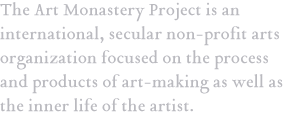Immanence
I’m heading off the grid for a week, but I really look forward to giving this more attention when I get back: “artmonks: children of Thoreau & Whitehead,” a post by Adrian Ivakhiv.
If Thoreau’s quest to “live deliberately […] and not, when I came to die, discover that I had not lived” were cross-bred with A. N. Whitehead’s insight that creativity is the driving core of all things in the universe, the “universal of universals,” then today’s “artmonks” are children not of Marx and Coca-Cola (as Godard once labeled the activists of the 1960s and Xiaoping Lin more recently called the Chinese artistic avant-garde), but children of Thoreau and Whitehead.
The monastic ideal has always been about living deliberately. And in a world that is rapidly outgrowing the secular-religious divide — becoming simultaneously post-secular, for those outgrowing the constraints of secularism, and post-religious, or at least post-traditional, for those no longer in obeisance to inherited religion — monasticism today is reinventing itself in interesting and creative ways. “Artmonks” are those who bring a mindful deliberation and dedication to the creative process, following it wherever it leads them. They are the monks of immanence, post-traditional devotees synthesizing the vita contemplativa with the vita activa in an age of Burning Man and the internet.
Ivakhiv lists a handful of outstanding artmonks:
Some others who’ve pursued their creative visions down whatever spiritual rabbitholes they led them include Joseph Beuys, Yves Klein, Marina Abramović, Stan Brakhage, Genesis P. Orridge, David Tibet, Robert Smithson, Nancy Holt, Andrei Tarkovsky, Derek Jarman, Carolee Schneemann, John Cage, Robert and Shana ParkeHarrison, Richard Long, Betsy Damon, Mary Beth Edelson, Vito Acconci, outsider artists like Henry Darger and Ferdinand Cheval, and on and on and on.
Leave a Reply
You must be logged in to post a comment.




